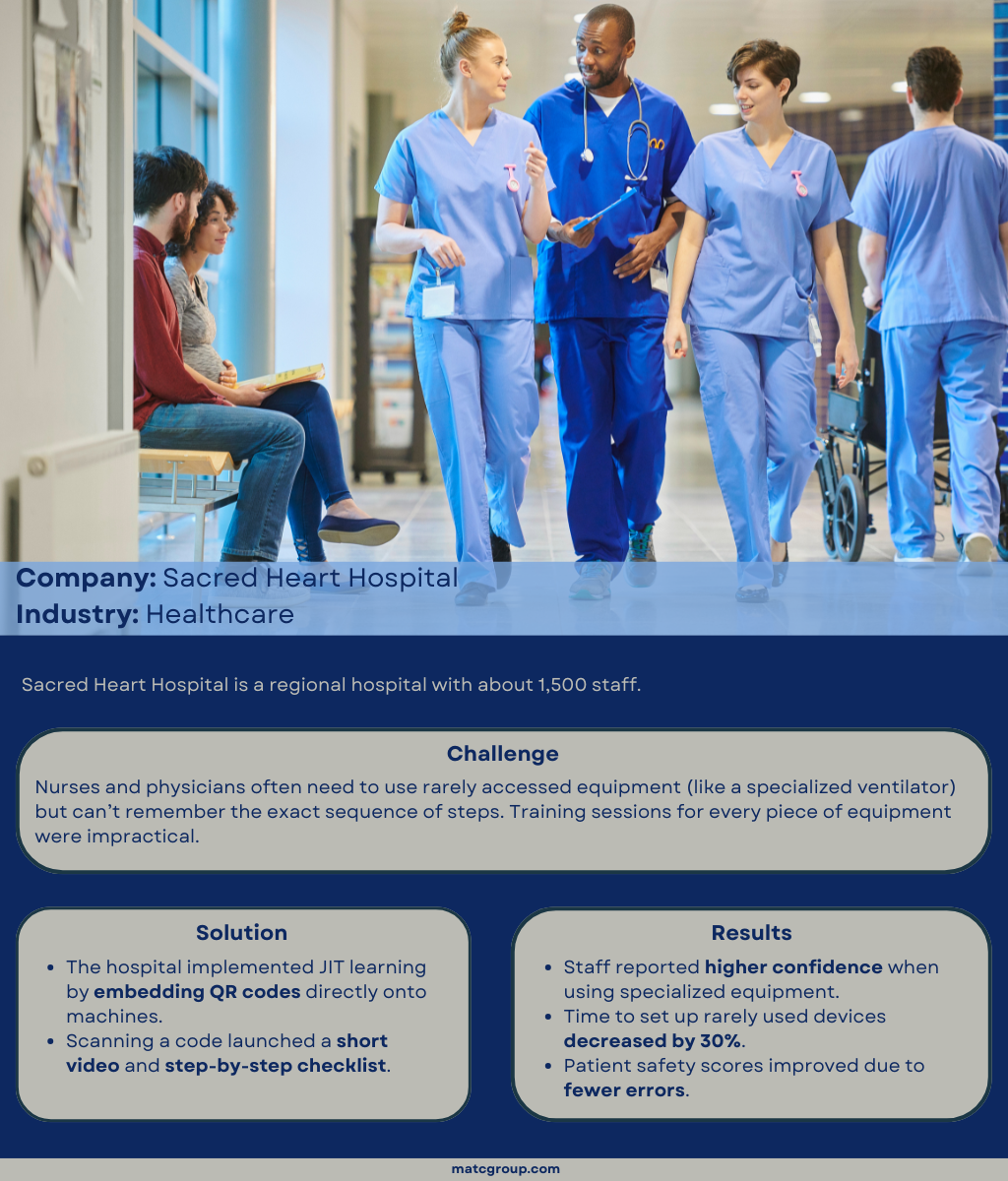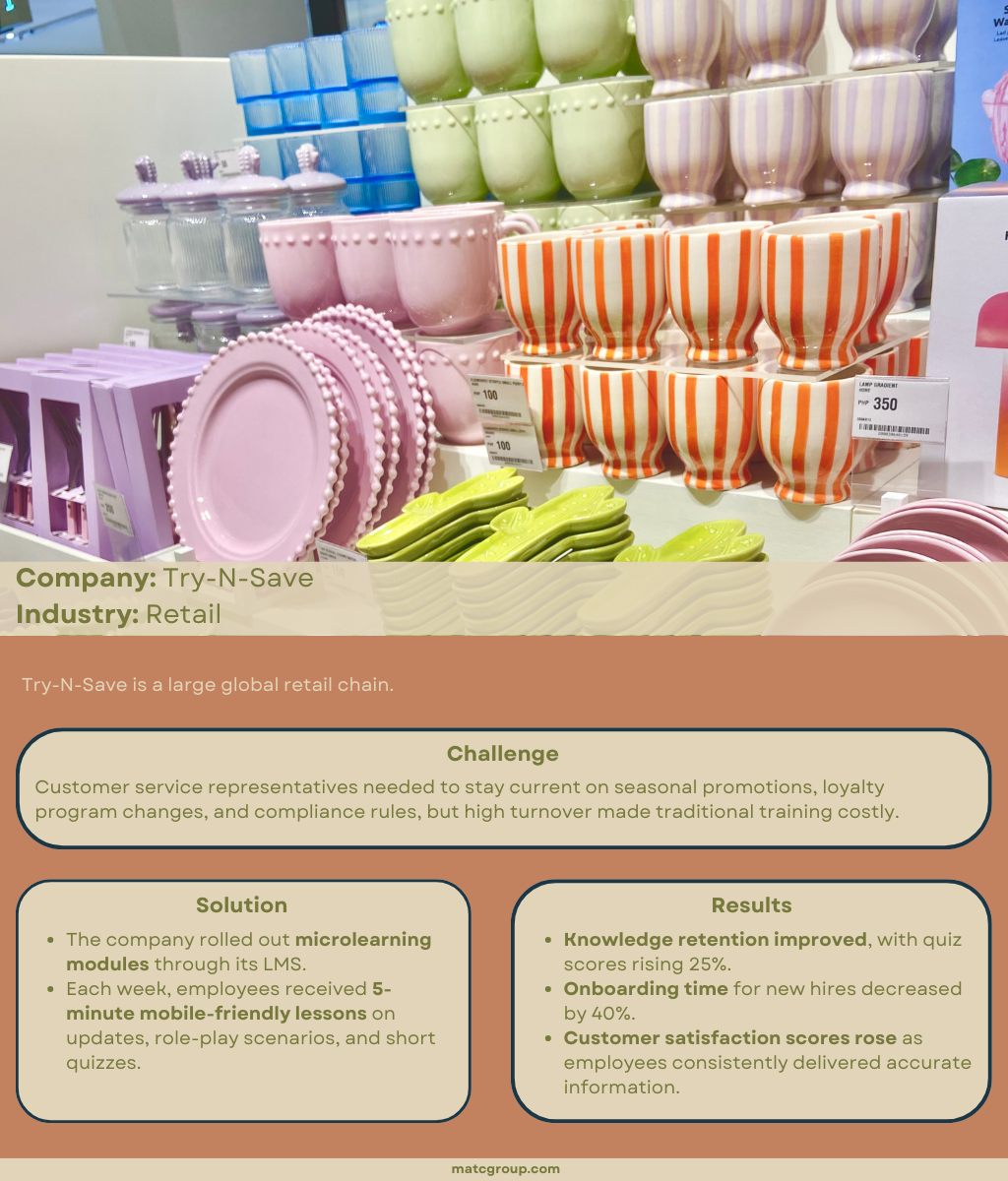- +1 (267) 368-7090
- contact@matcgroup.com
-
53 Knightsbridge Rd,
STE 216
Piscataway, NJ 08854.
In today’s fast-paced modern workplace, employees can’t always stop for a full training session or sit through a long course. Instead, they need answers at the moment of need — while they’re troubleshooting a system, interacting with a customer, or preparing for a task they rarely perform. That’s where Just In Time (JIT) Learning comes in.
Mind you, it’s not a replacement for traditional training, and it’s also not the same as microlearning (though the two are often confused). Each has its own strengths, and together they form a powerful learning strategy that boosts efficiency, reduces frustration, and improves retention.
JIT learning is training material delivered precisely when the learner needs it, like a quick reference card, an interactive job aid, or a searchable knowledge base. Instead of relying on memory, employees can instantly access resources that walk them through the steps, saving time and preventing errors.
Best practices for JIT learning:
Microlearning is short, focused training that builds knowledge in small chunks, like a five-minute eLearning module, a quick video, or a single interactive quiz. The goal is not just speed, but targeted reinforcement of key concepts, delivered in digestible pieces.
Best practices for microlearning:
Think of JIT learning as the “lifesaver in the moment” and microlearning as the “trainer in the gym.” One helps employees when they’re under pressure, the other strengthens skills over time. When organizations blend them, employees not only complete the task correctly, but also build confidence and competence that carry forward.
Here are three real-world examples showing how JIT learning, microlearning, and the combination of both can solve different workplace challenges while driving measurable results.
By putting critical instructions right at the point of need, Sacred Heart Hospital empowered staff to confidently use specialized equipment without delay.

Try-N-Save proved that short, targeted lessons can keep employees informed, reduce training costs, and boost customer satisfaction.

Acme Corporation showed how blending “help now” resources with ongoing skill-building creates safer, more efficient production lines.

JIT Time learning and microlearning are powerful on their own, but together they create a dynamic system of “help now” and “grow stronger later.” Organizations that embrace both give employees the tools they need to solve today’s problems while building the knowledge that prepares them for tomorrow.
How Microlearning and Just-in-Time Learning Can Boost Performance
Creating a Culture of Knowledge Sharing: Best Practices for Organizations